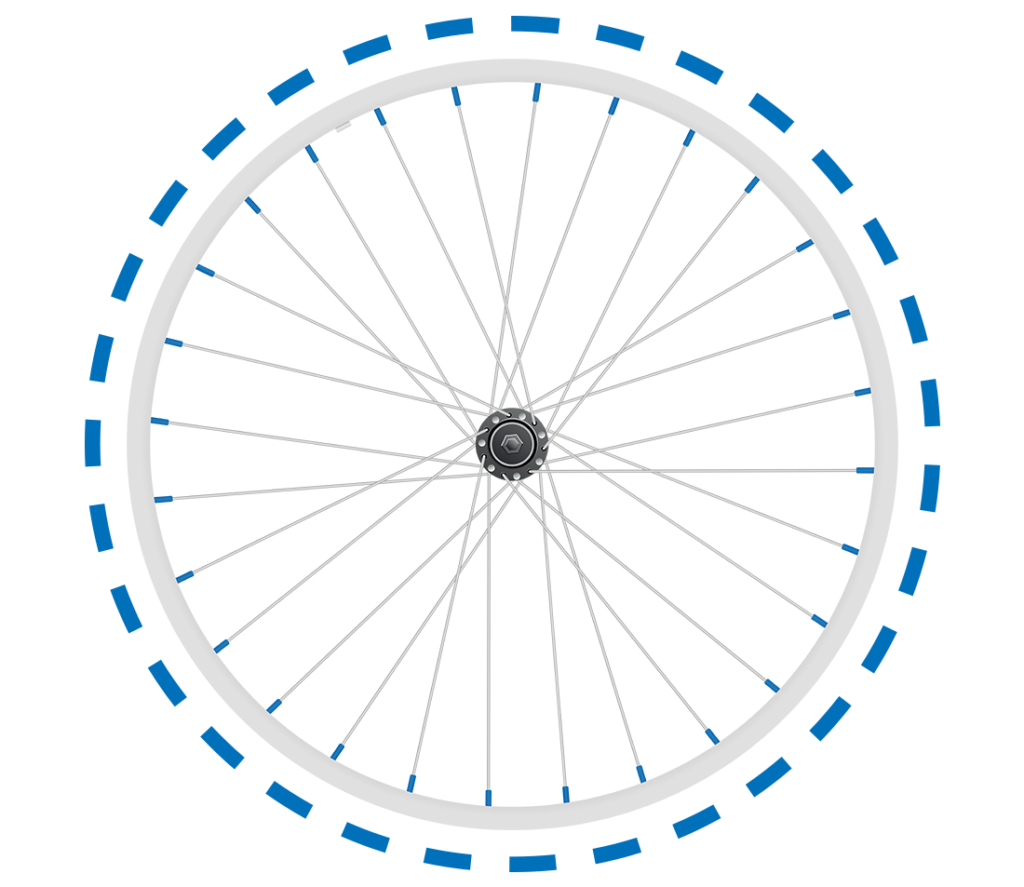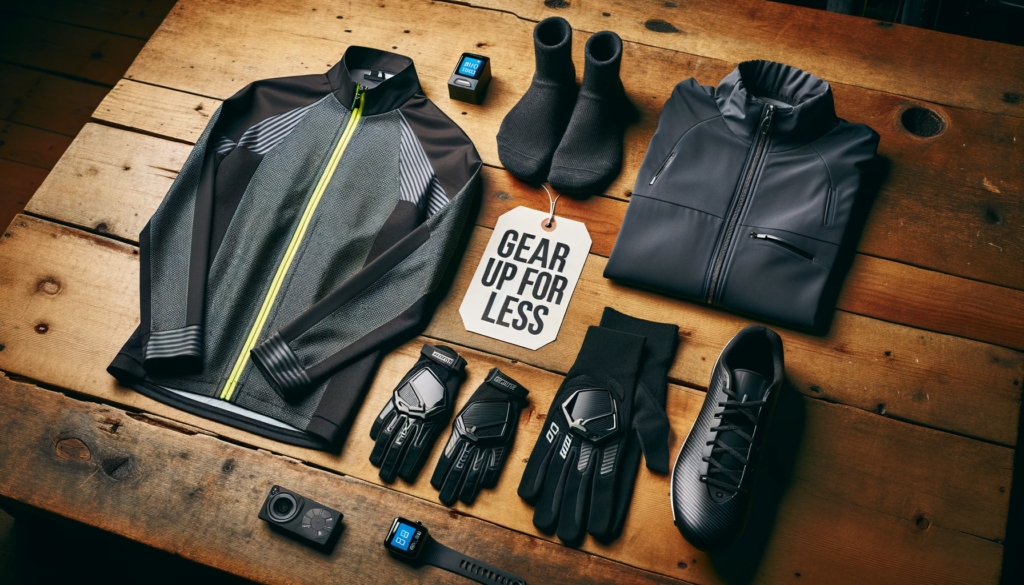Truing a bicycle wheel typically costs around $20 to $30. A properly aligned and balanced bicycle wheel is essential for a smooth and safe ride.
Over time, wheels can become out of true, meaning they develop a wobble or unevenness in their rotation. This can be caused by factors such as hitting bumps, potholes, or curbs. Truing a bicycle wheel involves adjusting the tension of the spokes to correct any misalignment and create an even rotation.
While it is possible to true a wheel at home with the right tools and knowledge, it is often recommended to have it done by a professional bike mechanic. We will explore the factors affecting the cost of truing a bicycle wheel and why it is important to invest in this service to keep your bike in optimal condition.
Factors Affecting The Cost Of Truing A Bicycle Wheel
When it comes to truing a bicycle wheel, there are several factors that can impact the cost of this service. Understanding these factors can help you budget accordingly and find the best option for your needs. Let’s take a closer look at the key factors that influence the cost of truing a bicycle wheel.
Type Of Wheel
The type of wheel you have plays a significant role in determining the cost of truing. Different types of wheels, such as road bike wheels, mountain bike wheels, or carbon fiber wheels, may require specific tools, expertise, and time to true. For example, truing a high-end carbon fiber wheel might require more attention to detail, increasing the overall cost. Additionally, certain types of wheels may need specialized equipment or techniques, increasing the complexity and cost of the truing process.
Severity Of The Issue
The severity of the issue with your bicycle wheel can impact the cost of truing. If the wheel has minor tweaks or only requires a slight adjustment to resolve the issue, the cost will likely be lower. However, if the wheel has significant damage, such as a bent rim or broken spokes, it may require more extensive truing or even wheel replacement, raising the cost. The severity of the issue directly affects the level of expertise, time, and effort needed to properly true the wheel.
Location And Service Provider
The location and service provider you choose can also influence the cost of truing a bicycle wheel. Different regions and service providers may have varying rates based on factors such as local labor costs, overhead expenses, and market demand. While it may be tempting to choose the cheapest option, it’s essential to consider the expertise and reputation of the service provider as well, as this can directly impact the quality of the truing job.
Overall, the type of wheel, severity of the issue, and choice of service provider are important factors to consider when determining the cost of truing a bicycle wheel. By understanding these factors, you can make an informed decision, ensuring your wheel receives proper truing without breaking your budget.

Credit: www.cyclist.co.uk
Determining The Type Of Wheel
Knowing the type of wheel on your bicycle is crucial when it comes to truing. Different types of bikes require different strategies for achieving optimal wheel performance. In this section, we will explore the three main types of wheels: road bike wheels, mountain bike wheels, and commuter/hybrid bike wheels.
Road Bike Wheels
Road bike wheels are specifically designed for speed and efficiency. They are often lightweight and aerodynamic, allowing riders to maintain high speeds on paved roads. When truing road bike wheels, it is important to ensure they are perfectly aligned and have minimal lateral and radial runout.
One common issue with road bike wheels is spoke tension. Over time, spokes may become loose or unevenly tensioned, which can cause the wheel to become out of true. Carefully inspecting the tension of each spoke and making adjustments as needed can help maintain optimal performance.
In addition, road bike wheels are typically equipped with narrow tires, which can accentuate any imperfections in the wheel’s alignment. Truing road bike wheels with precision can lead to a smoother and more enjoyable ride, reducing the risk of flats or handling issues.
Mountain Bike Wheels
Mountain bike wheels are built to withstand rough terrains and tough conditions. They are often wider and sturdier than road bike wheels, providing more stability and durability. When truing mountain bike wheels, it is crucial to address any lateral or radial runout to maintain balance and prevent unpredictable handling.
Due to the nature of off-road riding, mountain bike wheels are prone to damage from bumps, rocks, and jumps. This can result in bent rims or loose spokes, leading to wheel misalignment. Truing a mountain bike wheel may involve addressing these specific issues, ensuring the wheel is strong and true.
Moreover, mountain bike wheels often feature wider tires, which can lessen the impact of small imperfections in truing. However, a properly trued wheel is still essential for maintaining control and traction, especially in technical and challenging terrain.
Commuter/hybrid Bike Wheels
Commuter and hybrid bike wheels are versatile, designed to handle a variety of road conditions, from smooth pavement to gravel paths. They typically have a balance between speed and durability, making them suitable for urban commuting and leisure rides. Truing commuter/hybrid bike wheels requires attention to detail and precision.
One common issue with commuter/hybrid bike wheels is increased spoke tension due to heavy loads or impacts. This can lead to spokes becoming unevenly tensioned, causing the wheel to go out of true. Regularly checking and adjusting spoke tension helps keep the wheel in optimal condition for everyday rides.
In addition, commuter/hybrid bike wheels often utilize wider tires for enhanced comfort and stability. Although this can mask small inconsistencies in wheel alignment, a properly trued wheel ensures a smooth and efficient ride for commuters and recreational riders alike.
Recognizing And Assessing The Severity Of The Issue
When it comes to maintaining the performance and safety of your bicycle, truing the wheels is a task that should not be overlooked. However, before you grab your spoke wrench and start adjusting, it is important to recognize and assess the severity of the wheel issue. Understanding whether you are dealing with minor lateral or radial adjustments, moderate rim damage, or severe wheel misalignment or damage will help you determine the appropriate course of action.
Minor Lateral Or Radial Adjustments
If you notice slight wobbles or hops in your bicycle wheel, you may be dealing with minor lateral or radial adjustments. These issues can occur from everyday use, such as hitting potholes or curbs, and can be easily fixed with a few simple adjustments. To assess the severity, follow these steps:
- Spin the wheel and observe any wobbles or hops.
- Check for loose or broken spokes.
- Place the bike in a stable position and use a spoke wrench to make minor adjustments to correct the lateral or radial issues.
Remember to make these adjustments gradually and evenly, always checking the wheel’s trueness as you go. With minor issues, a little patience and attention to detail can go a long way in restoring the wheel’s stability.
Moderate Rim Damage
Sometimes, the issue with your bicycle wheel goes beyond minor adjustments. Moderate rim damage can occur from more significant impacts or wear and tear over time. To assess the severity and determine whether truing can solve the problem, follow these steps:
- Inspect the rim for any signs of cracks, dents, or significant deformations.
- If the rim damage is minimal and the wheel is relatively true, truing the wheel may still be an option.
- However, if the rim damage is severe, it may be necessary to replace the rim altogether.
It is crucial to keep in mind that severe rim damage can compromise the structural integrity of the wheel, affecting your ride quality and safety. In such cases, consulting a professional bicycle mechanic is highly recommended to ensure a proper assessment and repair.
Severe Wheel Misalignment Or Damage
In some unfortunate cases, your bicycle wheel can experience severe misalignment or damage that goes beyond the scope of truing. This can include bent or broken spokes, severely dented rims, or even structural issues with the hub or axle. To assess the severity, follow these steps:
- Visually inspect the wheel for obvious signs of damage, such as bent or broken spokes, significant rim deformations, or loose or misaligned hubs.
- If the damage is severe, it is best to consult a professional bicycle mechanic for a thorough assessment and appropriate repairs.
Remember, attempting to true severely damaged wheels on your own can lead to further damage and compromise your safety while riding. Prioritizing your well-being by seeking professional assistance is always the best course of action when faced with severe wheel issues.

Credit: flatbike.com
Finding The Right Service Provider And Understanding The Cost
When it comes to truing a bicycle wheel, finding the right service provider and understanding the cost are essential factors to consider. Truing a wheel involves adjusting the spokes to eliminate any wobbles or hops, ensuring a smooth and safe ride. While the task may seem daunting, particularly for beginners, there are various options available that cater to different preferences and budgets. In this article, we will explore three main avenues for truing bicycle wheels: local bicycle shops, online bicycle services, and DIY options.
Local Bicycle Shops
If you prefer a hands-on approach and value personalized service, visiting a local bicycle shop is an excellent choice. These shops often have experienced mechanics who possess the expertise and tools necessary to true your bicycle wheel effectively. Moreover, engaging with local shops not only supports your community but also allows you to establish a relationship with a trusted professional who can address any future needs or concerns.
When it comes to cost, local bicycle shops will typically charge an hourly rate or a flat fee for truing a wheel, depending on the extent of the job. Costs may vary based on factors such as the shop’s location, its reputation, and the complexity of the truing process. To get an accurate estimate, it is advisable to contact several local bicycle shops in your area, providing them with specific details about your wheel truing needs.
Online Bicycle Services
Alternatively, if you prefer convenience and flexibility, online bicycle services offer a practical solution. Many online platforms specialize in bicycle maintenance and repairs, allowing you to ship your wheel to them for truing. These services often provide detailed instructions on how to remove and package your wheel securely for shipping, ensuring it arrives safely.
The cost of using online bicycle services for truing will typically include shipping fees, the cost of the actual truing service, and return shipping. It is crucial to research and compare different service providers, paying attention to customer reviews and reputation. While online services may lack the face-to-face interaction of a local shop, they can be a cost-effective option, particularly for those with limited access to nearby bicycle shops.
Diy Options
If you enjoy tackling projects on your own or want to save some money, DIY wheel truing is a viable option. However, it is important to note that wheel truing requires careful attention to detail and proper knowledge of the process. It is recommended for those who are mechanically inclined or have experience working on bicycles in the past.
DIY wheel truing requires a few specialized tools, including a spoke wrench and a truing stand or a simple homemade truing gauge. Online tutorials and videos can guide you through the process, offering step-by-step instructions. While the cost is lower for DIY options since you are not paying for professional services, you should consider the potential costs of any mistakes or damage that may occur during the truing process.
When it comes to truing a bicycle wheel, weighing your options and understanding the cost is essential. Local bicycle shops offer personalized service, online bicycle services provide convenience, and DIY options appeal to those with mechanical skills. It’s important to consider factors such as cost, expertise, and access before deciding which avenue is right for you. Regardless of your choice, ensuring a properly trued wheel is paramount for a safe and enjoyable cycling experience.
Frequently Asked Questions On How Much To True A Bicycle Wheel
How Much Does It Cost To True A Bicycle Wheel?
The cost of truing a bicycle wheel can vary depending on factors such as the shop’s hourly rate and the severity of the wheel’s condition. On average, it can cost around $15 to $30.
How Do You Know If Your Bicycle Wheel Needs Truing?
You can tell if your bicycle wheel needs truing by spinning it and looking for any wobbles or side-to-side movement. Another sign is if the brake pads rub against the rim while riding.
Can You True A Bicycle Wheel At Home?
While it is possible to true a bicycle wheel at home, it requires specific tools and knowledge. It’s recommended to seek the help of a professional for the most accurate results.
How Long Does It Take To True A Bicycle Wheel?
The time required to true a bicycle wheel can vary depending on the severity of the wheel’s condition. On average, it can take around 15 to 30 minutes per wheel.
Why Is It Important To True A Bicycle Wheel?
Truing a bicycle wheel ensures proper alignment, which improves ride quality, prevents premature wear on wheel components, and enhances braking performance.
Conclusion
To wrap it up, the cost of truing a bicycle wheel can vary depending on several factors. From the severity of the wobble to the expertise of the technician, each element contributes to the final price. Regular maintenance and proper wheel alignment are crucial for a smooth and safe ride.
Remember, investing in professional truing services is well worth it in the long run to ensure optimal performance and extend the lifespan of your bicycle.




